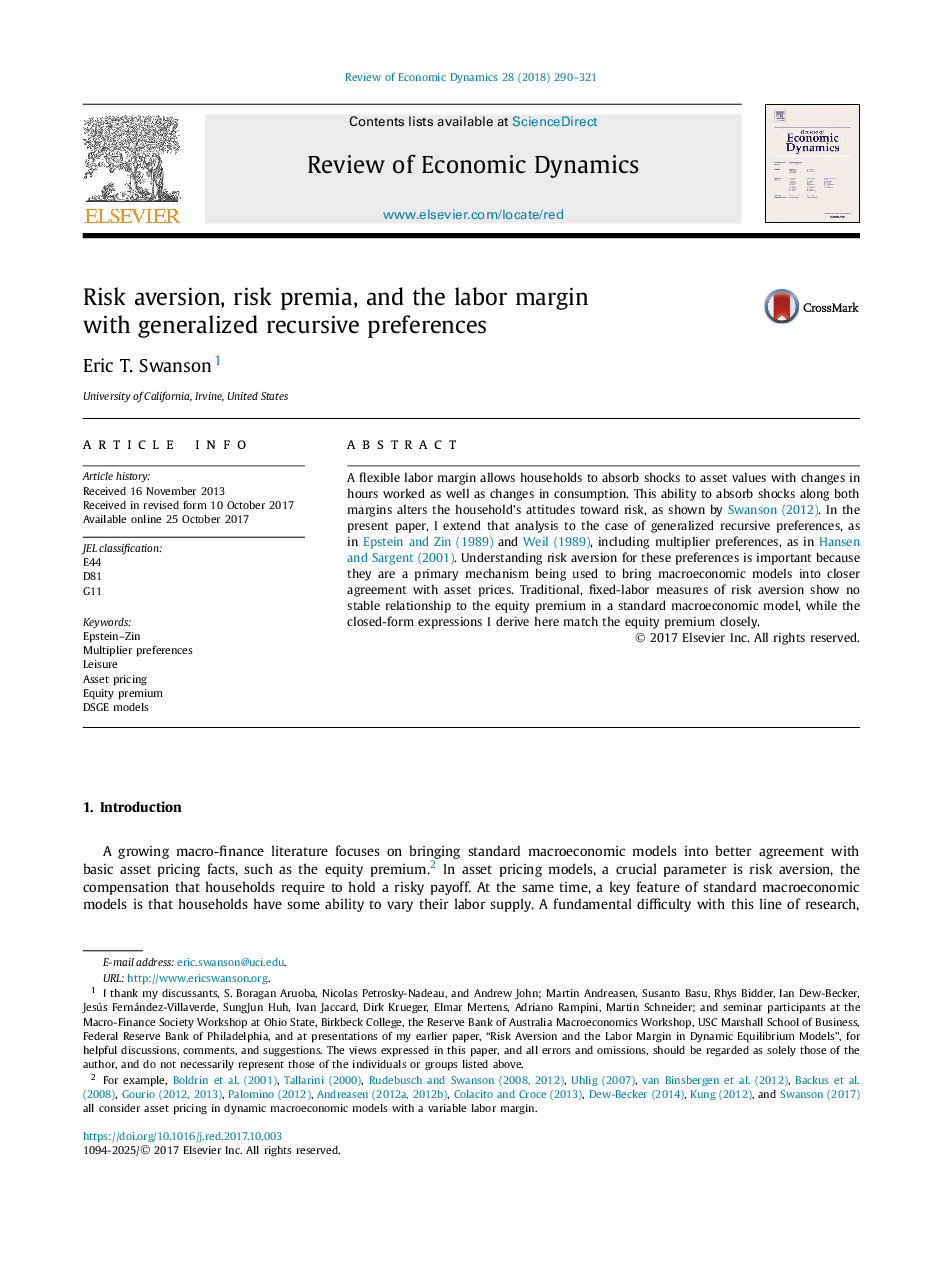| Article ID | Journal | Published Year | Pages | File Type |
|---|---|---|---|---|
| 7388203 | Review of Economic Dynamics | 2018 | 32 Pages |
Abstract
A flexible labor margin allows households to absorb shocks to asset values with changes in hours worked as well as changes in consumption. This ability to absorb shocks along both margins alters the household's attitudes toward risk, as shown by Swanson (2012). In the present paper, I extend that analysis to the case of generalized recursive preferences, as in Epstein and Zin (1989) and Weil (1989), including multiplier preferences, as in Hansen and Sargent (2001). Understanding risk aversion for these preferences is important because they are a primary mechanism being used to bring macroeconomic models into closer agreement with asset prices. Traditional, fixed-labor measures of risk aversion show no stable relationship to the equity premium in a standard macroeconomic model, while the closed-form expressions I derive here match the equity premium closely.
Related Topics
Social Sciences and Humanities
Economics, Econometrics and Finance
Economics and Econometrics
Authors
Eric T. Swanson,
